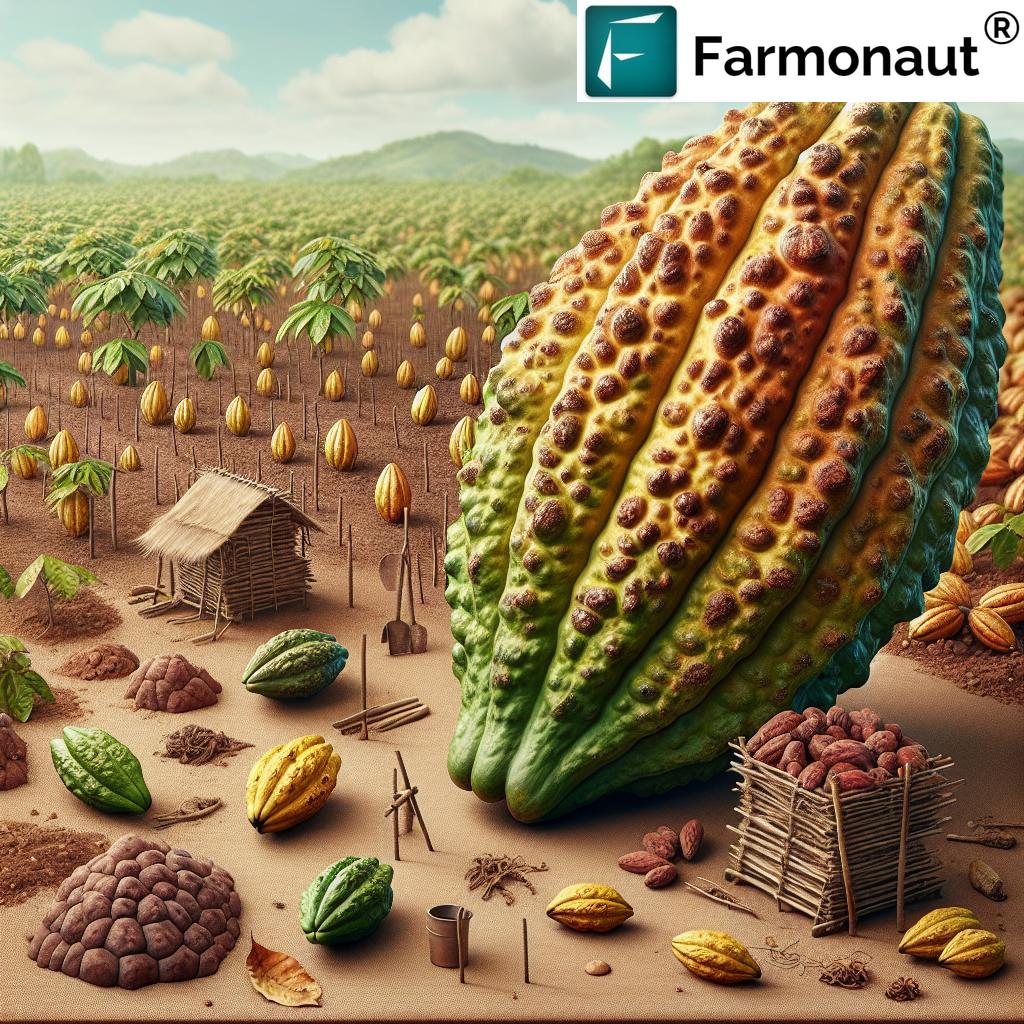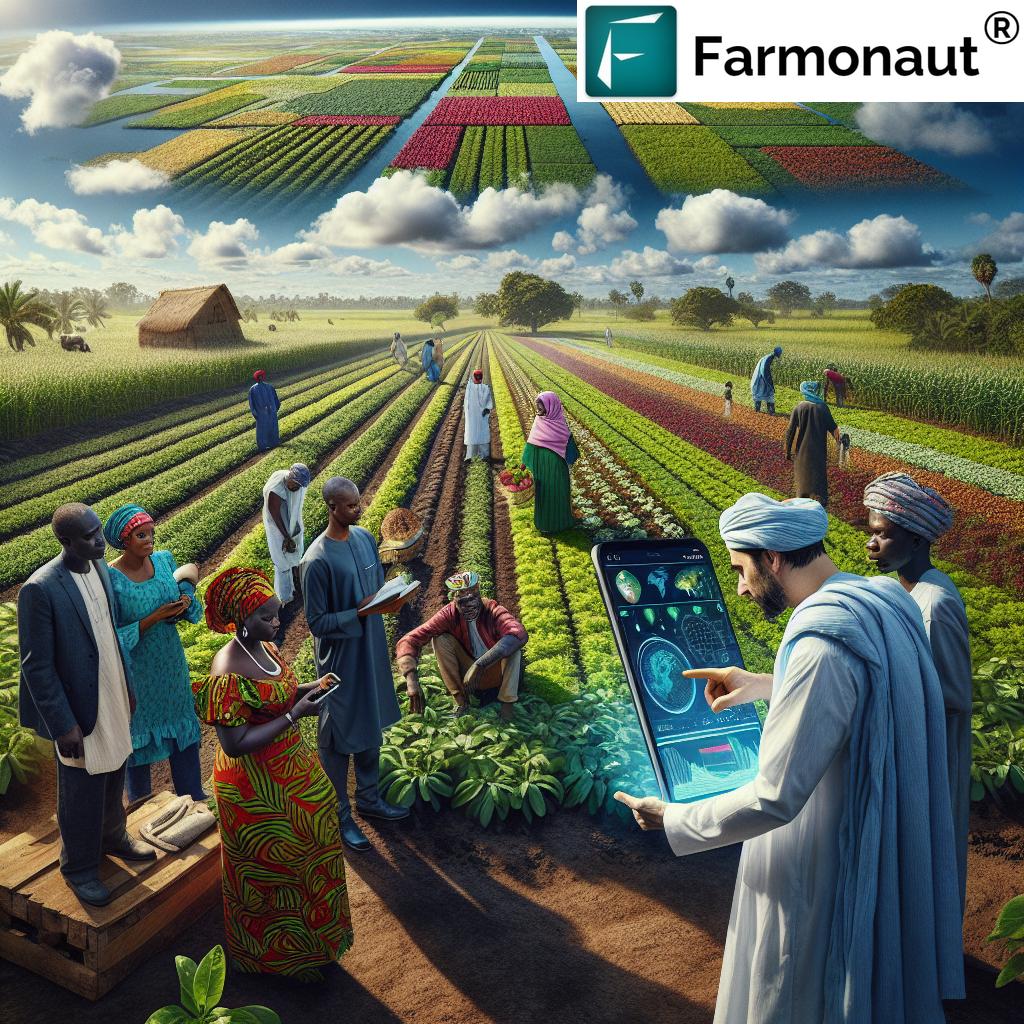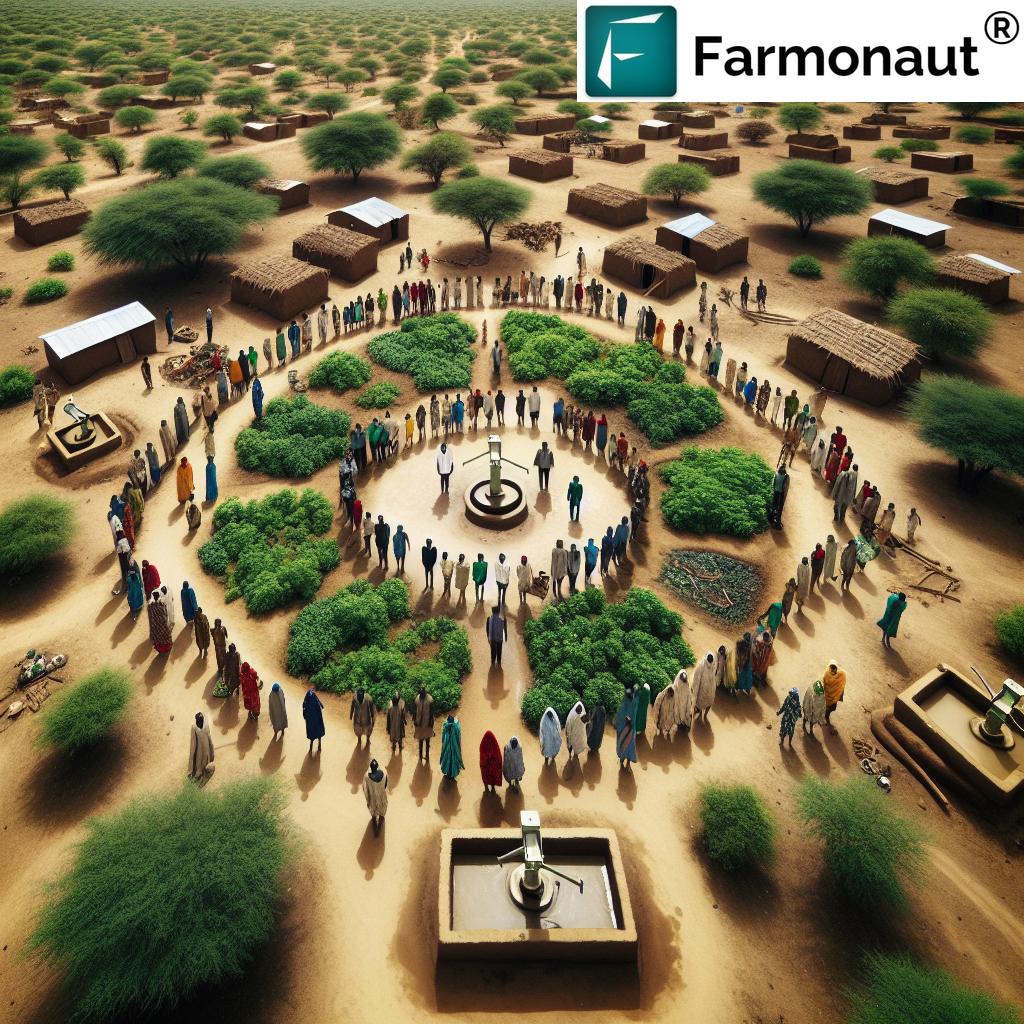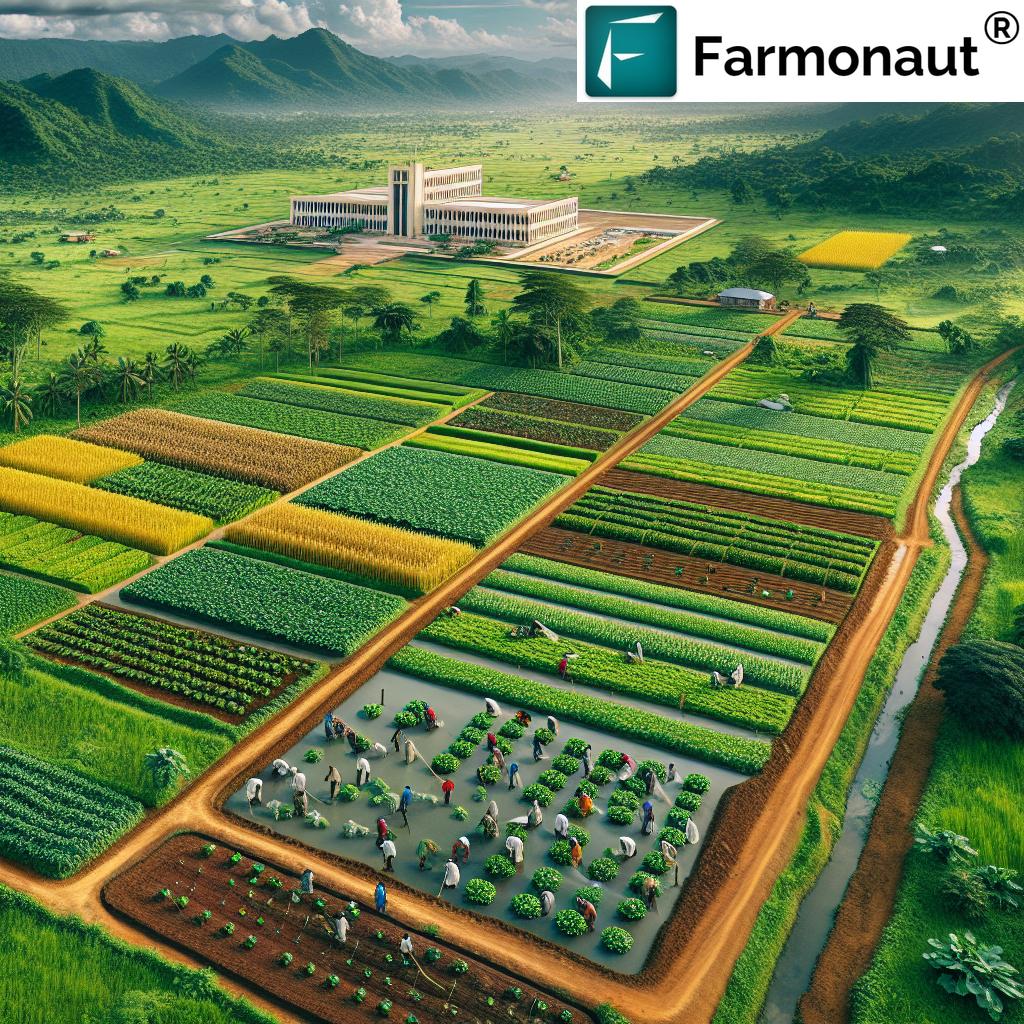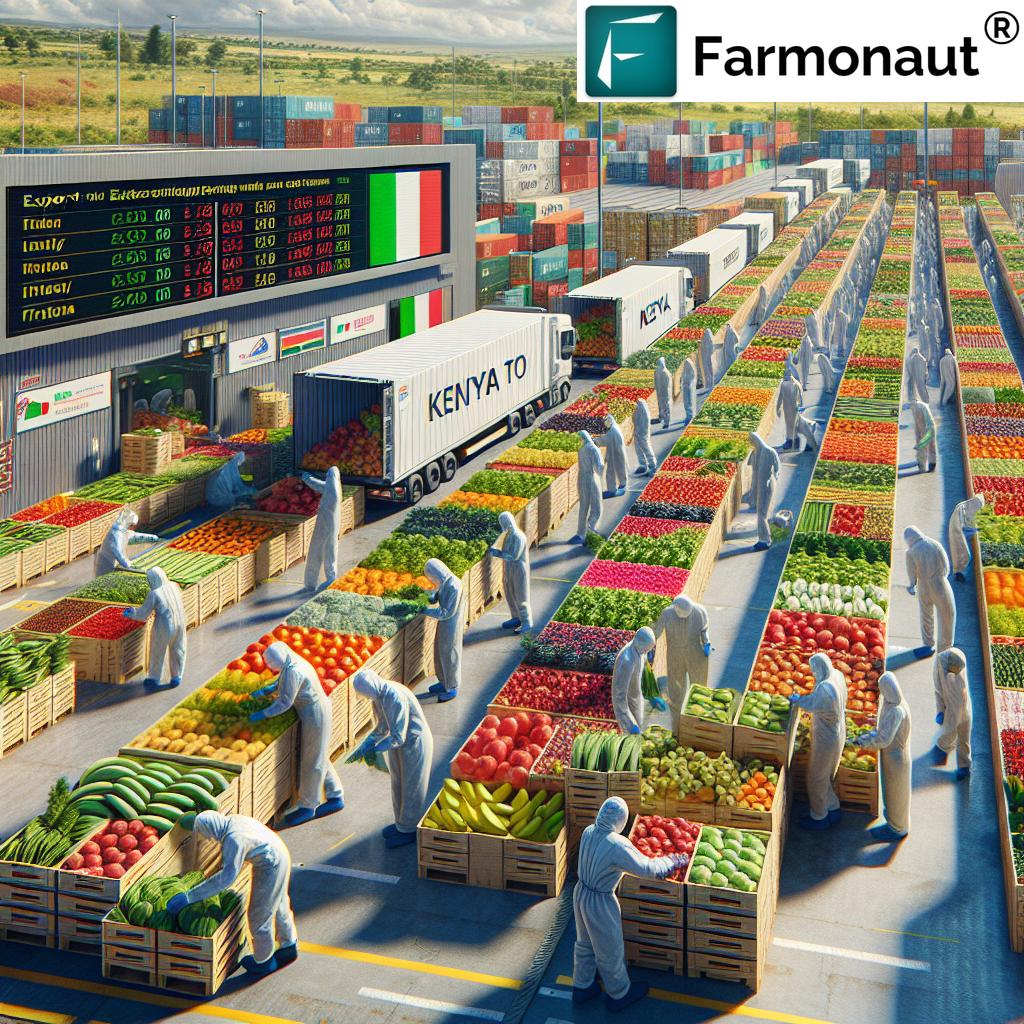Table of Contents
- Introduction: Cocoa in Ghana’s Economy & Culture
- Trivia Spotlights
- Geographical Distribution & Climate: Where Cocoa Thrives
- Economic Significance: Cocoa’s Role in Ghana’s Economy
- Major Challenges Facing Cocoa Production in Ghana
- Cocoa in Ghana: 7 Powerful Solutions for Sustainable Growth
- 1. Regenerating Aging Cocoa Trees & Attracting Young Farmers
- 2. Combatting Pests and Diseases: Science & Tech
- 3. Deforestation & Sustainable Cocoa Farming Practices
- 4. Improving Cocoa Supply Chain Efficiency & Infrastructure
- 5. Addressing Illegal Mining’s Impact and Land Restoration
- 6. Advancing Sustainable Agroforestry in Cocoa Cultivation
- 7. Government Reforms, International Collaboration & Certification
- Technology for Sustainability: Farmonaut’s Precision Agriculture Solutions
- Comparative Table: Challenges & Sustainable Solutions
- Midpoint Trivia Spotlight
- Frequently Asked Questions (FAQ) on Cocoa in Ghana
- Conclusion: The Path Forward for Ghana’s Cocoa Sector
Cocoa in Ghana: 7 Powerful Solutions for Sustainable Growth
Ghana stands proudly as the world’s second-largest cocoa producer, a position that shapes not only our economy but also our national culture and rural livelihoods. For generations, cocoa production in Ghana has been deeply embedded in our agricultural sector, underpinning the livelihoods of over 800,000 smallholder farmers scattered across the lush, forested regions of Ashanti, Brong-Ahafo, Central, Eastern, Western, and Volta areas. As we look towards a future of sustainable growth, it is vital that we collectively address the major challenges facing cocoa farmers and embrace innovative, eco-friendly practices to keep our industry resilient and thriving.
Trivia Spotlights
We can now harness tools like precision agriculture and satellite-based farm management to turn these targets into reality, making technology accessible to every farmer, big or small.
Geographical Distribution & Climate: Where Cocoa Thrives in Ghana
Cocoa truly thrives in the forested regions of Ghana. Our most productive cocoa-growing areas—Ashanti, Brong-Ahafo, Central, Eastern, Western, and Volta—receive annual rainfall between 1,000 to 1,500 millimeters. This plentiful rainfall and tropical climate are crucial in enabling cocoa trees to flourish. These regions, covered with rich, loamy soils and often surrounded by thick forests, not only provide optimal growing conditions but are also pivotal centers of cocoa culture and community in our country.
- Ashanti Region: Central to Ghana’s cocoa belt, with a focus on both quantity and quality production.
- Brong-Ahafo: Emerging as a key zone for newer plantations due to favorable rainfall and promising prospects.
- Central, Eastern, and Western Regions: Longstanding strongholds with many established cocoa farms, frequently facing rejuvenation and sustainability needs.
- Volta Region: A vital area for both traditional and expanding farms, highlighting the importance of geographical diversity in Ghana’s cocoa economy.
It is within these forested heartlands that we must both protect and innovate if we want cocoa production in Ghana to consistently contribute to our future growth and economic security.
Economic Significance: Cocoa & Ghana’s GDP
The cocoa industry’s economic significance for Ghana cannot be overstated. As a major foreign exchange earner, cocoa contributes about $2 billion annually to our economy. This translates directly into rural livelihoods, export earnings, and national GDP. For many of our smallholder farmers, cocoa is the difference between poverty and opportunity—providing crucial income for education, health care, and daily living.
The government’s ambition to process 50% of Ghana’s cocoa domestically by 2030 points to a future where we add value, create jobs, and increase export revenues by moving up the global value chain. It also puts sustainability at the center of policy, incentivizing better environmental practices, stronger supply chains, and a fairer deal for our farmers.
Major Challenges Facing Cocoa Production in Ghana
Despite its vital role, our cocoa sector faces several major challenges that threaten sustainable growth and farmer wellbeing. To safeguard both the environment and our economy, we must address these head-on:
Aging Cocoa Trees & Workforce
A significant proportion of cocoa trees in Ghana are now over 20 years old, naturally resulting in declining yields. Compounding this, our farming workforce is aging, with fewer young people motivated to continue the tradition due to low profitability and challenging conditions. This double-aging dynamic undermines sector resilience and future capacity for growth. Unless rejuvenation strategies take center stage, our yields will fall behind global demand.
Pests and Diseases in Cocoa Trees
The Cacao Swollen Shoot Virus (CSSV) is a particularly devastating threat to cocoa production in Ghana. Transmitted by mealybugs, the virus can cause entire farms to fail. Between 2006 and 2010, over 28 million infected cocoa trees were removed to control its spread. Other pests, fungi, and diseases—including black pod and mirids—further undermine farmer productivity and household income. Effective solutions must combine scientific knowledge, robust monitoring, and responsive management to limit future outbreaks.
Illegal Mining and Cocoa Farms (Galamsey)
A surge in illegal gold mining (galamsey) continues to adversely affect cocoa farms in Ghana, stripping the land of nutrients, contaminating water supplies, and rendering previously arable soils infertile. The loss of land to mining, coupled with environmental degradation, erodes the potential for cocoa expansion and the long-term prosperity of our agricultural regions. Managing this crisis requires multisectoral coordination and a commitment to sustainable land restoration practices.
Impact of Deforestation on Cocoa
The expansion of cocoa farms into forested areas has resulted in significant deforestation. This not only impacts the biodiversity and stability of local ecosystems but also disrupts rainfall patterns and intensifies climate challenges. The impact of deforestation on cocoa extends to reduced soil fertility, increased pest pressures, and a compromised environment for future generations. As cocoa communities, we must prioritize agroecological integrity and pursue ways to keep farms profitable without sacrificing forests.
Cocoa Supply Chain Efficiency
Current inefficiencies in the supply chain—from inadequate transportation infrastructure to limited financing options—cut into farmer earnings and sector-wide profitability. Fragmented governance and lack of traceability also open the door to losses and mistakes that ripple all the way from farm to export market. Improving supply chain efficiency can boost incomes, ensure product quality, and reinforce Ghana’s global reputation as a top-quality cocoa producer.
Cocoa in Ghana: 7 Powerful Solutions for Sustainable Growth
Addressing the challenges facing cocoa farmers requires a new era of sustainable innovation. Here, we outline the seven most promising solutions fostering resilience and long-term sector health:
1. Regenerating Aging Cocoa Trees & Attracting Young Farmers
An accelerated tree rejuvenation campaign is essential for sustained productivity. We must:
- Replace aging cocoa trees with new, disease-resistant varieties, offering better yields and improved resilience.
- Provide incentives and training targeted at young people, making cocoa cultivation and farm management more attractive and financially rewarding.
- Utilize digital farm management platforms (such as those offered by Farmonaut Large Scale Farm Management Tools) to monitor replanting progress and optimize productivity across Ghana’s key regions.
By supporting current and next-generation farmers, Ghana’s cocoa sector growth can be revitalized well into the future.
2. Combatting Pests and Diseases: Science & Tech
Early detection and rapid response remain the best defenses against CSSV and other pests and diseases in cocoa trees.
- Employ real-time satellite-based crop monitoring and AI-driven crop advisory systems to identify hotspots and minimize infected tree losses.
- Empower farmers with smartphone-based diagnostics and digital alerts for rapid, informed treatment decisions.
- Continue government and scientific research into virus-resistant cocoa varieties and integrated pest management strategies.
Combining these practices helps us control spread, reduce the number of trees removed, and protect Ghana’s cocoa legacy.
3. Deforestation & Sustainable Cocoa Farming Practices
We have a shared responsibility to balance expansion with biodiversity conservation. Key strategies include:
- Agroforestry and shade-grown cocoa models that integrate timber or fruit trees, enhancing ecosystem services and income diversification.
- Enhanced education on sustainable cocoa farming practices that minimize deforestation and improve soil health over time.
- Adoption of carbon footprint measuring tools (see Farmonaut’s Carbon Footprinting platform) to monitor and report environmental impacts of cocoa farms.
These holistic approaches not only safeguard the environment but also secure future cocoa production in Ghana.
4. Improving Cocoa Supply Chain Efficiency & Infrastructure
Supply chain inefficiencies reduce sector profitability and transparency. Solutions:
- Invest in transport infrastructure, storage facilities, and rural road networks for smoother cocoa movement.
- Utilize digital blockchain-based traceability systems (e.g., Farmonaut’s Product Traceability) to monitor every cocoa batch’s journey from farm to export, ensuring trust for buyers and better pricing for farmers.
- Offer farmers easier access to finance and insurance through satellite-based verification processes (details here), reducing fraud and fostering supply chain trust.
A streamlined supply chain lifts farmer income and helps Ghana compete globally.
5. Addressing Illegal Mining’s Impact and Land Restoration
Combating the destructive effects of illegal mining on cocoa farms requires multi-level action:
- Enforce stricter laws and provide alternative livelihoods to reduce the draw of illegal mining in cocoa-growing regions.
- Rehabilitate degraded lands using sustainable land management and native species replanting.
- Implement environmental monitoring systems to identify, assess, and address environmental degradation in real time.
Through persistent efforts, lost lands can be restored and cocoa’s place as a primary economic driver protected.
6. Advancing Sustainable Agroforestry in Cocoa Cultivation
Agroforestry in cocoa cultivation provides our farmers with environmental resilience and diversified revenue streams. Embedding sustainable agroforestry into cocoa plantations can yield benefits such as:
- Enhanced soil fertility and reduced vulnerability to climate variability by integrating a mix of tree species.
- Additional income from shade trees (timber), fruits, or other intercropped plants—lessening sole dependence on cocoa export revenues.
- Stronger carbon sequestration to combat climate change and improve environmental sustainability—trackable using digital carbon tools.
Farmer training in these practices, supported by agricultural technology, enables a more robust and sustainable cocoa industry in Ghana.
7. Government Reforms, International Collaboration & Certification
To secure sustainable growth, we need proactive government reforms and international cooperation.
- Upcoming reforms to COCOBOD promise greater efficiency, possible private sector engagement, and better farmer compensation.
- Participate in global certification initiatives and international collaboration, such as the Cocoa & Forests Initiative, setting transparent standards for sustainable cocoa production.
- Promote and support community education regarding certification, sustainable practices, and policy engagement at local and international levels.
These actions—taken together—make Ghana’s cocoa sector a model for inclusive, environmentally responsible agricultural development.
Technology for Sustainability: Farmonaut’s Precision Agriculture Solutions
Digital transformation is rapidly revolutionizing sustainable cocoa farming practices in Ghana. At the forefront, Farmonaut is making precision agriculture accessible and affordable for every farmer, cooperative, and agribusiness:
- Satellite-Based Crop Health Monitoring: Using multi-spectral imagery, our farmers now get real-time updates on vegetation health (NDVI), soil moisture, and potential disease outbreaks—all from their mobile devices. This means smarter irrigation, optimized fertilizer use, and actionable pest management, culminating in higher yields and fewer losses.
- AI & Real-Time Advisory: Tools like the Jeevn AI Advisory System empower users to receive instant, customized recommendations on crop care, weather, and risk management—directly from satellite and climate data analysis.
- Blockchain-Based Traceability: With product traceability, every bean of cocoa can be tracked from farm to export, boosting Ghana’s reputation for quality and transparency, and helping meet buyer and government standards.
- Fleet & Resource Management: Farms and agribusinesses can leverage fleet management solutions to optimize logistics and reduce costs associated with transportation inefficiencies.
- Carbon Footprinting: Ghanaian cocoa producers can now track and reduce their environmental footprint, comply with international standards, and tap into new “green” markets and incentives.
- Crop Loan & Insurance Facilitation: With accurate, satellite-backed field data, bankers and insurers can confidently underwrite crop loans and micro-insurance for cocoa farmers, improving rural access to financing.
- API-first Platform: Developers and NGOs can access Farmonaut’s API and developer docs to build their own tools, research apps, or integrate advanced weather-data for cocoa sector analysis.
All these services are available via Android, iOS, browser, and APIs for everyone—smallholder farmers, government officials, or large enterprise stakeholders—delivering the right data at the right time for a stronger, more sustainable Ghanaian cocoa ecosystem.
Comparative Table: Challenges and Sustainable Solutions for Cocoa Production in Ghana
| Challenge | Estimated Impact (% of farms or loss) |
Sustainable Solution | Estimated Improvement |
|---|---|---|---|
| Aging Cocoa Trees & Workforce | 35% of farms; 15% yield decline | Tree rejuvenation programs, youth engagement | 25-30% yield increase in rejuvenated plots |
| Pests and Diseases (CSSV etc.) | 20% farms affected; 10% crop loss | Early detection tech, improved varieties, advisory | Reduction of losses to under 5% with integrated approach |
| Illegal Mining (Galamsey) | 8% of cocoa land lost or degraded | Stricter law enforcement, community education, restoration | Recovery and restoration of up to 6% of arable cocoa land |
| Deforestation | 18% of cocoa-driven expansion | Agroforestry, carbon tracking tools | Preserves up to 40% more biodiversity, secures microclimates |
| Supply Chain Inefficiencies | Up to 12% loss of export value | Blockchain traceability, improved roads, digital finance | 5-10% increase in farmer price; better global ranking |
| Climate Variability | 5-10% yield variability annually | Precision ag, real-time advisories, carbon accounting | Stabilizes production; reduces losses by 3-5% yearly |
Midpoint Trivia Spotlight
Frequently Asked Questions (FAQ) on Cocoa in Ghana
-
Q: Why is cocoa so important to Ghana’s economy?
Cocoa is a major foreign exchange earner, generating approximately $2 billion annually. It supports the livelihoods of hundreds of thousands of rural families and contributes significantly to national GDP and export revenues.
-
Q: What are the “forested areas” where cocoa grows best in Ghana?
Cocoa thrives in regions like Ashanti, Brong-Ahafo, Central, Eastern, Western, and Volta, all of which receive optimal rainfall (1,000–1,500mm annually) and possess rich soils for cultivation.
-
Q: What is the major challenge facing cocoa farmers today?
Some of the biggest challenges include aging cocoa trees (old and less productive), pest and disease outbreaks (especially CSSV virus), illegal mining, deforestation, and inefficient supply chains.
-
Q: How does Farmonaut help Ghanaian cocoa farmers?
Farmonaut empowers farmers through satellite-based crop health monitoring, AI-driven advisories, product traceability, carbon footprint tracking, fleet management, and facilitating crop loans/insurance. It provides cost-effective, precision agriculture tools accessible by mobile, web, or API.
-
Q: How can more sustainable cocoa farming practices be adopted?
By integrating agroforestry (mixing cocoa with other trees), using digital tools for farm monitoring, reducing deforestation, employing pest-resistant cocoa varieties, and participating in global certifications.
-
Q: What role does government reform play in the sector?
Government reforms—including the restructuring of COCOBOD and possible public-private engagement—aim to increase efficiency, ensure fair farmer compensation, and align policy with sustainability and global best practices.
Conclusion: The Path Forward for Ghana’s Cocoa Sector
As we have seen, cocoa production in Ghana remains central not only to our economy and culture but also to the global chocolate industry. To protect and enhance this legacy, a holistic mix of sustainable practices, government reforms, technological innovation, and international collaboration is essential.
Through solutions like regenerating aging trees, adopting precision agriculture, combating illegal mining, and safeguarding forests with sustainable agroforestry, we position Ghana’s cocoa sector for resilient growth and prosperity.
Technology providers like Farmonaut are making it possible—and affordable—for every smallholder, agribusiness, and policy-maker to access advanced monitoring, traceability, and sustainability tools. These digital solutions are helping rural communities adapt, boost yields, and command higher prices—with fewer environmental compromises.
By working together, across sectors and generations, we ensure that Ghana’s cocoa story continues—one of innovation, stewardship, and lasting economic significance for generations to come.





